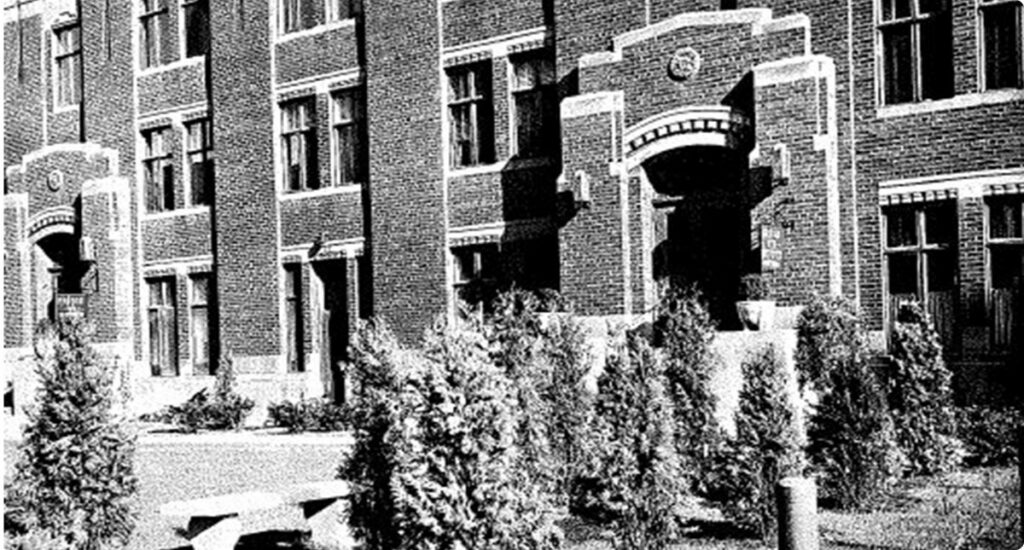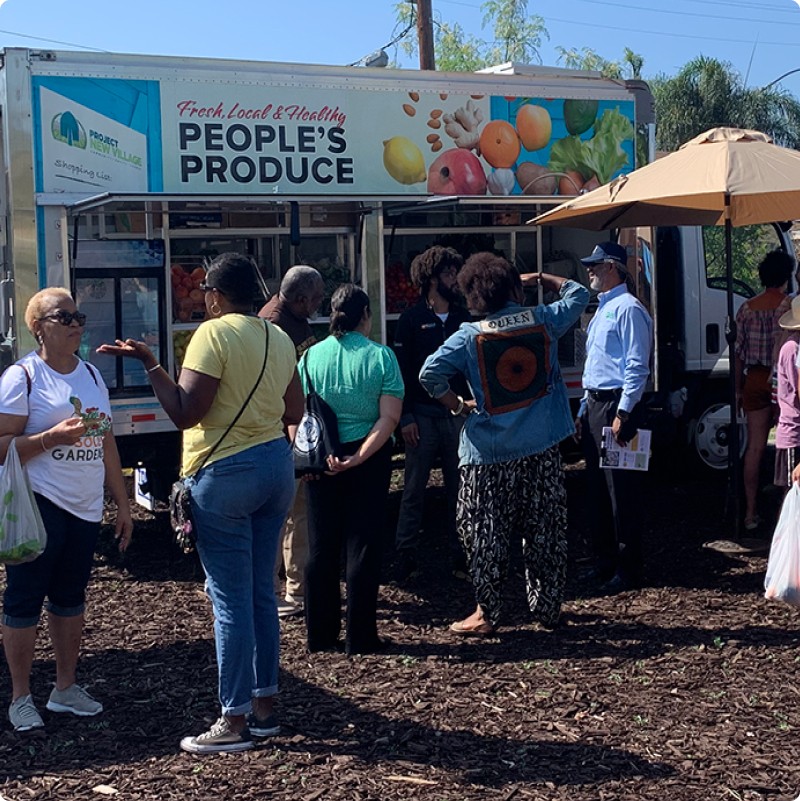A founding area of support refines its strategy to focus on community health, health equity.
How far back can you trace work related to this program?
The Health sector has been one of Kresge’s major fields of interest since the foundation’s earliest years, with a principal emphasis on supporting medical research and scientific equipment. Grants varied in size from a few thousand to several million dollars for projects spanning in purpose from writing medical textbooks to constructing a medical research center at the University of Michigan. While funding was typically reserved for existing organizations, in 1948 the foundation supported the establishment of the Kresge Eye Institute in Detroit to conduct ophthalmological research and education and provide clinical care for patients living in poverty.


When was this current program officially established?
In 2007, as the foundation was in the process of transitioning from a capital challenge grantmaker to a more strategic, values-driven funder focused on advancing opportunity for people with low incomes, a new Health Program was created with the intention of improving community health and reducing health disparities by addressing “upstream” factors.
“We argued that poor health was more largely attributed to unhealthy conditions, such as lack of access to healthy food, safe physical activity, housing and exposure to pollution, rather than individual behavior or lack of health care,” said David Fukuzawa, who served as managing director of the Health Program from its inception until his retirement in 2019.
This new Health Program would “seek to reduce health disparities through innovative, place-based strategies that explore the intersection between health, environment and community economic development. The Kresge Foundation will provide tools to selected underserved communities to address their health needs,” Fukuzawa wrote in December 2007.
What is an example of an early grant in this space?
One of the earliest grants in 2008 was to the Trust for Public Land, for a $2 million public-private initiative to redesign and rebuild parks and playgrounds in Newark, N.J. The initiative grew out of the community’s response to a widely publicized incidence of gun violence. It would eventually incorporate elements of what is now called community-centered design and placemaking.
Later in 2008, the Health Program would launch one of Kresge’s first initiatives, Get the Lead Out, aimed at preventing childhood lead poisoning by improving substandard housing. One grantee, Greensboro Housing Coalition received a multi-year $300,000 grant, and would later gain national recognition for its pioneering healthy housing efforts and partnerships with health care institutions to improve housing.

Why has this area been historically important to Kresge?
During its capital challenge grants era, Kresge had been one of the largest national health funders, ranking 13th among the top 50 U.S. foundations awarding grants for health (Foundation Center 2005). From 2004 to 2006, 16% of all Kresge grants were health related, with grants to hospitals accounting for more than 88%. The national landscape is dotted with medical and research buildings that stand today as a result of Kresge’s capital challenge grant support.
How do the current strategies reflect or build on our historical investments in this area?

The Health Program has redoubled the foundation’s efforts to address the root causes of health inequity by investing in community-driven solutions, wealth-building opportunities, and multi-sectoral collaboration for creating community health ecosystems.
Health is integral to cross-cutting efforts with other Kresge teams that lead community economic development investments, Health Program Managing Director Monica Valdes Lupi said. In addition, by emphasizing health equity, racial justice, and policy and advocacy across the program’s grant-making, the program is committed to supporting community partners activities to create healthy, thriving ecosystems.



Q: Why has this area been historically important to Kresge?
(Quote from an MD, Rip or former Kresge employee)
Lorem ipsum dolor sit amet, consectetuer adipiscing elit. Aenean commodo ligula eget dolor. Aenean massa. Cum sociis natoque penatibus et magnis dis parturient montes, nascetur ridiculus mus. Donec quam felis, ultricies nec, pellentesque eu, pretium quis, sem. Nulla consequat massa quis enim. Donec pede justo, fringilla vel, aliquet nec, vulputate eget, arcu. In enim justo, rhoncus ut, imperdiet
Q: How do the current strategies reflect or build on our historical investments in this area?
(Quote from an MD, Rip or former Kresge employee)
Lorem ipsum dolor sit amet, consectetuer adipiscing elit. Aenean commodo ligula eget dolor. Aenean massa. Cum sociis natoque penatibus et magnis dis parturient montes, nascetur ridiculus mus.
How far back can you trace work related to this program?
The foundation’s exploration of using non-grant forms of capital to advance its mission began in 2008. That year Kresge made its first five social investments, all loans between $1 million to $2.5 million.
Then in 2009, the foundation responded further to the financial crisis by issuing more than a dozen no-interest loans to nonprofits directly involved in stabilizing and supporting communities.
“Like so many things, the origins of the Social Investment Practice had its roots in crisis,” said Kresge Trustee Jim Bildner, who was instrumental in moving Kresge to begin using these tools in its work. “2008 was a profound moment for our country and for vulnerable populations. The impact of the fiscal crisis hit every element of the preexisting safety net. This created an enormous supply and demand problem that the foundation had not seen since the Great Depression.”
“The idea to make these no-interest loans came from the Trustees themselves, which was rare,” said Bildner, “and took less than 30 days from idea to reality.”
Q: When was this Program officially established? (Year and short explainer)
In 2012, Kresge hired its first managing director of social investments, Kimberlee Cornett. In 2015, the foundation expanded this area of work with a $350 million commitment – representing 10% of its corpus at that time – to deploy into impact investing.

Q: What’s an example of an early investment in this space?
IFF, $2.5 million, 2008
This 3% interest loan was paired with a $500,000 grant and supported IFF, a Community Development Financial Institution that provides below market-rate real estate loans, facilities planning and development, research projects and community planning initiatives. With the combination of a structured PRI and a grant, our support enabled the expansion of IFF's loan and advisory services out of Illinois, a critical step in expanding its ability to provide access to new sources of capital, while building IFF’s organizational capacity to sustain program operations.
